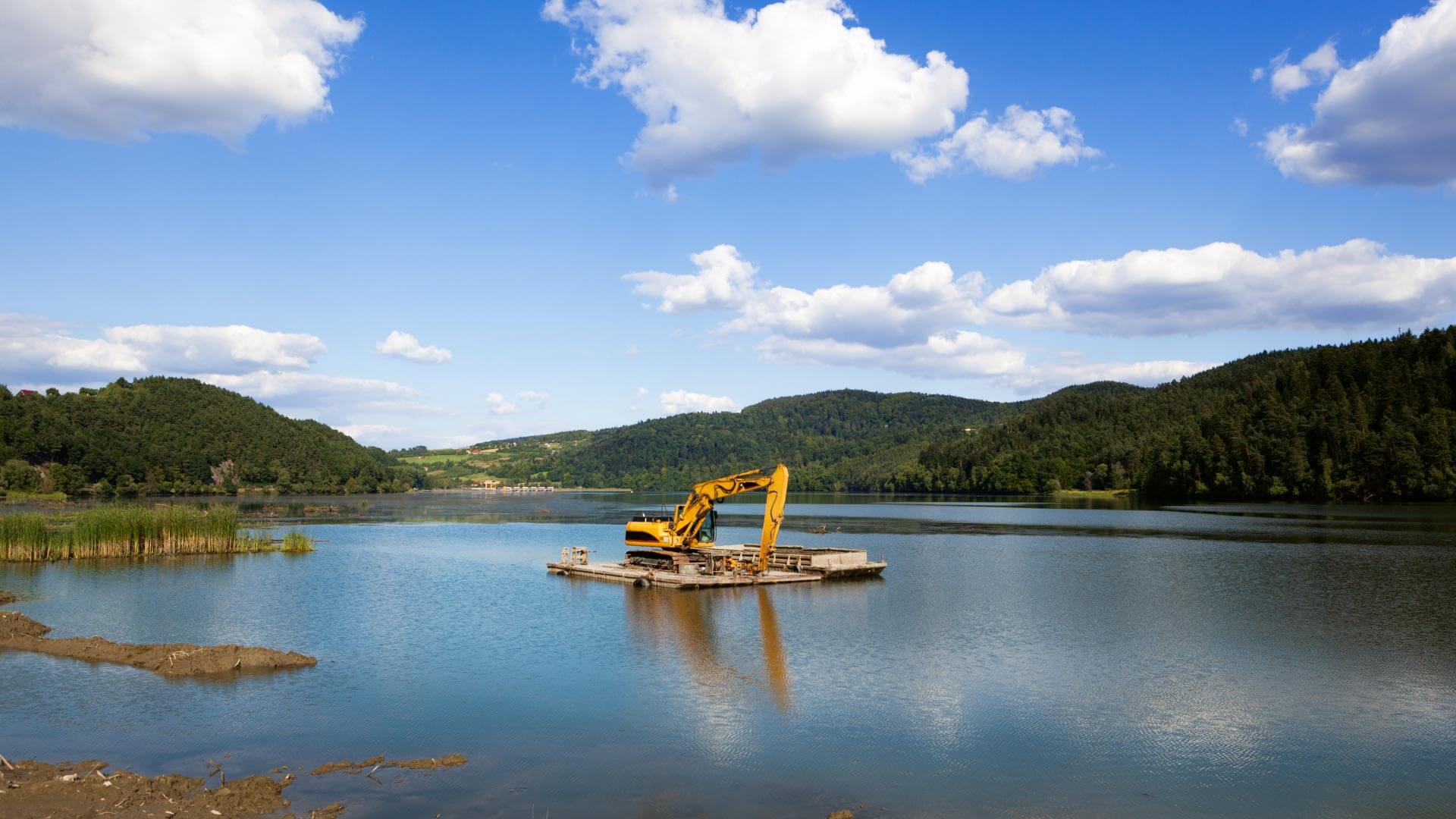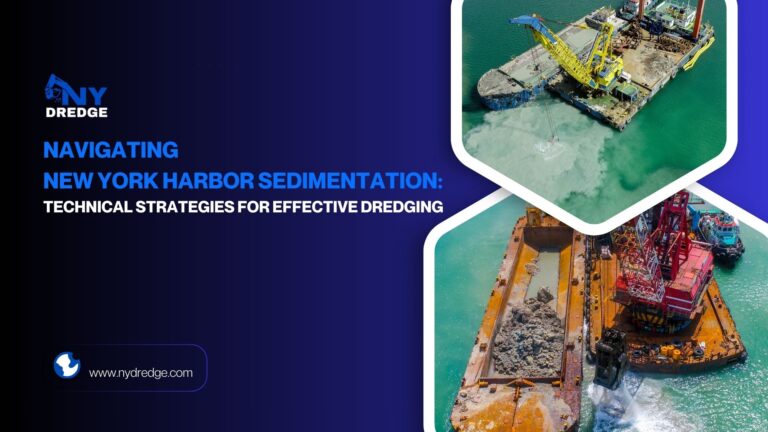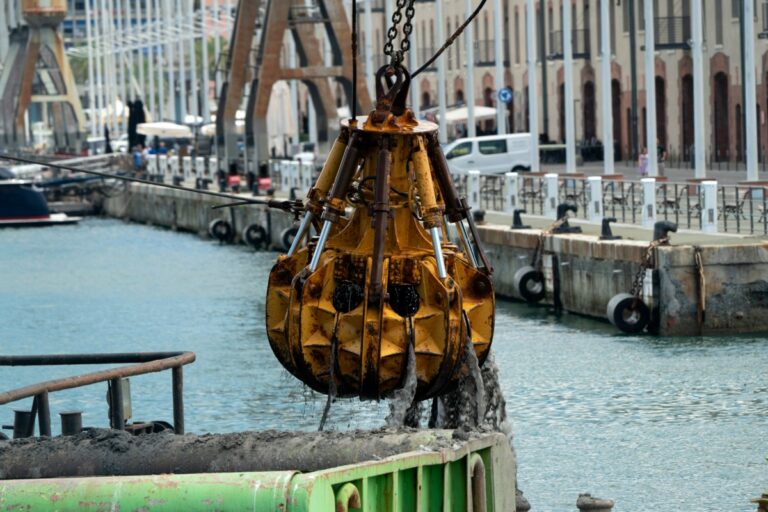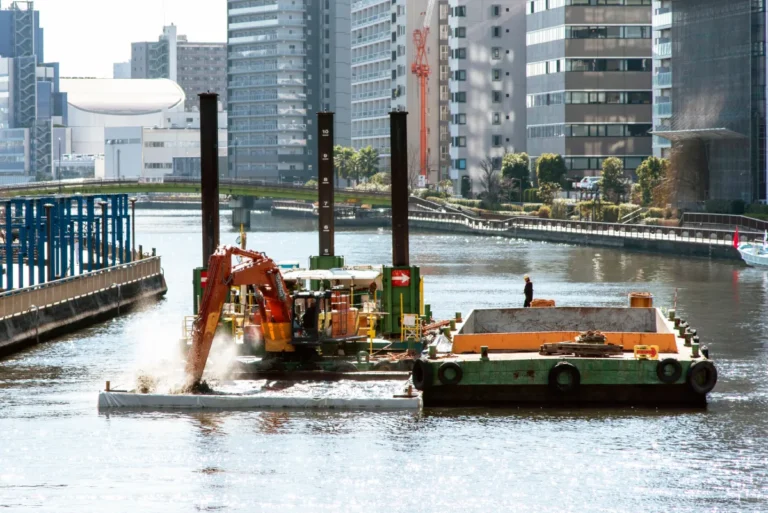Lake dredging plays a vital role in maintaining and restoring the health of lakes, ensuring they remain functional, aesthetically pleasing, and safe for ecosystems and recreational activities. By removing accumulated sediment, debris, and pollutants, lake dredging helps restore water depth, improve water quality, and enhance the lake’s overall usability. Whether for environmental restoration, flood prevention, or recreational purposes, dredging a lake is often a necessary solution.
However, embarking on a lake dredging project without a clear understanding of the cost factors can lead to budget overruns and unnecessary delays. Factors such as the size of the lake, sediment composition, and the type of equipment—like a dredge for lake operations—significantly influence pricing. Additionally, costs related to permits, labor, and sediment disposal can vary widely.
Understanding these variables is essential for effective budget planning, allowing stakeholders to make informed decisions and optimize resources. By delving into the critical factors that affect costs, this guide will help you navigate the complexities of planning and executing your dredge lake project successfully.
What is Lake Dredging?
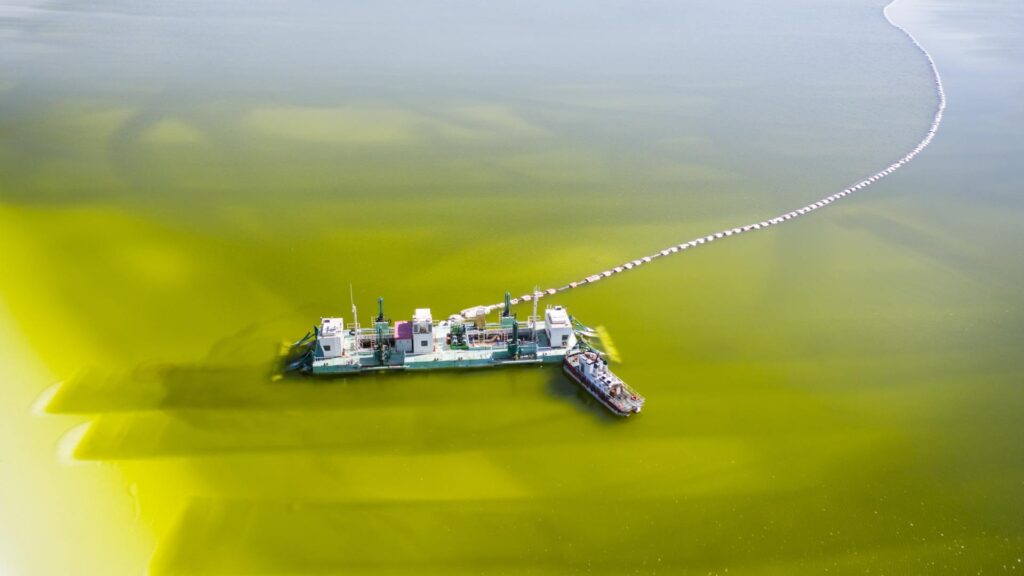
Lake dredging is the process of removing accumulated sediment, debris, and other unwanted materials from the bottom of a lake. Over time, lakes naturally collect sediment, organic matter, and pollutants, which can reduce water depth, degrade water quality, and disrupt aquatic ecosystems. Dredging a lake is a proven method to restore its health, functionality, and visual appeal.
The primary goals of lake dredging include:
- Sediment Removal: Clearing excess sediment helps restore the lake’s original depth and prevents further ecological imbalances.
- Improving Water Quality: Dredging can remove harmful pollutants and nutrient-rich sediment, which often contribute to algae blooms and poor water conditions.
- Restoring Depth and Capacity: Dredging increases water capacity, which is critical for flood management and supporting aquatic life.
- Enhancing Aesthetics and Recreation: A dredged lake is more visually appealing and offers better opportunities for activities like boating, swimming, and fishing.
The success of these projects heavily depends on using the right equipment, such as a dredge for lake restoration. Specialized dredging equipment is designed to remove sediment while minimizing environmental impact efficiently. Options like cutter suction dredges, auger dredges, and hydraulic dredges are often tailored to the specific needs of a dredge lake project, ensuring optimal results.
Lake dredging is an essential process for maintaining the long-term health and usability of lakes, whether for environmental conservation, property enhancement, or community recreation.
Factors That Influence Lake Dredging Costs

Understanding the factors that influence lake dredging costs is essential for proper budget planning and project execution. These variables range from the scope of the project to the type of equipment used and regulatory considerations. Below is a breakdown of the key factors impacting the cost of dredge lake projects.
Project Scope
The size and complexity of the project significantly affect costs.
- Size of the Lake and Sediment Volume: Larger lakes with substantial sediment buildup require more time and resources, increasing expenses. The volume of sediment to be removed dictates the scale of the operation and the equipment needed.
- Accessibility: Remote or hard-to-reach locations can add logistical challenges, such as the difficulty of transporting a dredge for lake projects and other necessary equipment.
Sediment Composition
The type of material to be dredged also influences costs.
- Material Types: Sediment may include sand, silt, clay, organic debris, or even contaminants that require special handling. Denser materials or hazardous waste often demand specialized equipment and disposal methods.
- Testing Requirements: Some projects may require pre-dredging testing to analyze sediment composition, which can increase the overall expense of lake dredging.
Equipment and Technology
The choice of dredging equipment and technology plays a crucial role in project costs.
- Types of Dredges: Different types of dredges, such as cutter suction dredges, auger dredges, or hydraulic dredges, vary in cost and efficiency. Selecting the right dredge for lake projects ensures cost-effectiveness and minimal environmental impact.
- Innovative Technology: Advancements like automated dredging systems can improve precision and reduce labor costs, making them a smart investment for large-scale projects.
Labor and Expertise
The cost of skilled labor and project management must be factored into the budget.
- Skilled Operators: Hiring experienced operators for the dredge lake project ensures efficient and safe operations.
- Regulatory Compliance: Specialists familiar with local environmental regulations can help avoid costly fines or project delays due to non-compliance.
Permits and Legal Requirements
Every lake dredging project requires permits, and these can significantly impact costs.
- Permit Costs: Regulatory agencies often require permits for sediment removal, water quality protection, and environmental safety. These can vary depending on the region and scope of the project.
- Potential Fines: Failure to obtain proper permits or adhere to regulations can lead to fines and delays, driving up the overall cost of the dredge lake project.
Disposal of Dredged Material
Handling and disposing of dredged material is another critical cost factor.
- On-Site vs. Off-Site Disposal: On-site disposal, such as using sediment for shoreline reinforcement, is often more cost-effective than transporting material to an off-site location.
- Transportation and Safety Measures: If off-site disposal is necessary, costs for transportation, containment, and compliance with environmental safety standards can quickly add up.
Optimizing Costs in Lake Dredging Projects
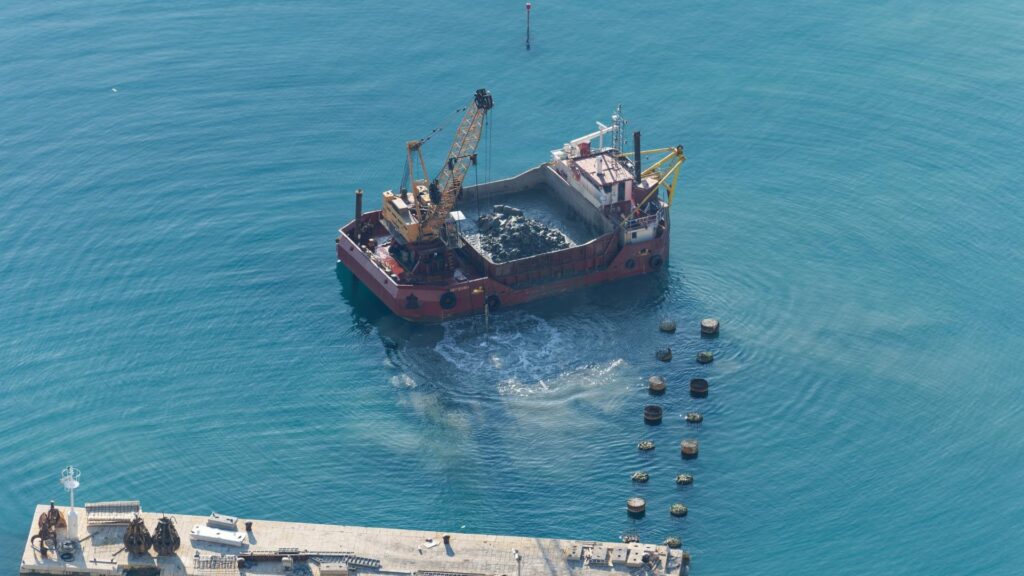
By carefully evaluating these factors and choosing the right dredge for lake projects, stakeholders can manage costs effectively while achieving their goals. Whether it’s selecting the appropriate equipment, understanding sediment composition, or complying with regulations, informed planning ensures a successful and budget-friendly lake dredging operation.
How to Budget for Lake Dredging Projects
Creating an accurate budget for lake dredging projects is critical to ensuring a successful outcome without unexpected financial challenges. Proper planning, research, and collaboration with experts can help streamline the process and optimize resources. Below are actionable steps to develop a reliable budget for your dredge lake project.
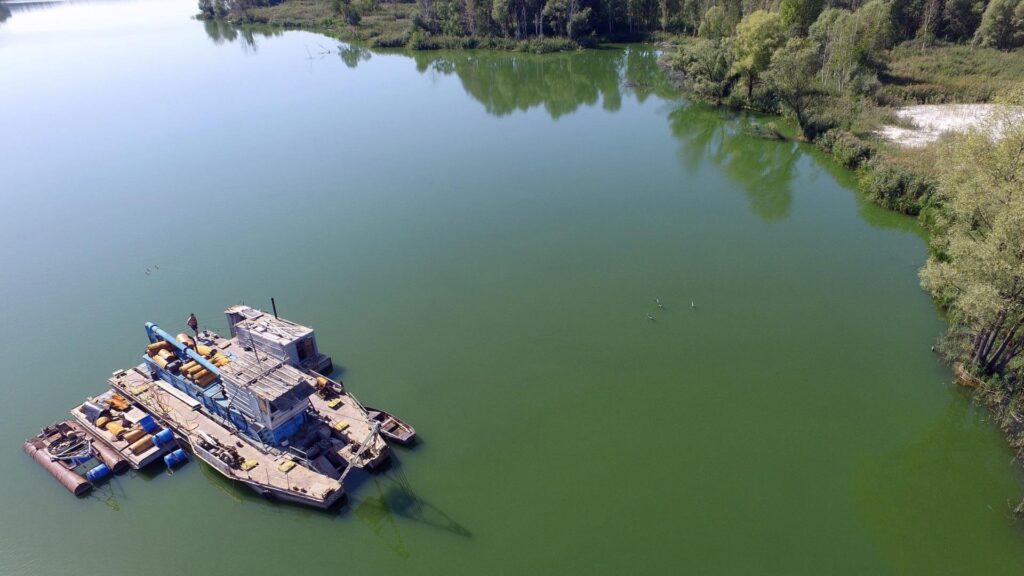
1. Conduct a Feasibility Study
A feasibility study is the foundation of any successful lake dredging project.
- Evaluate Project Scope: Assess the lake’s size, sediment volume, and specific project goals, such as sediment removal, water quality improvement, or capacity restoration.
- Site Analysis: To better understand the required resources, identify site-specific challenges, such as accessibility, sediment composition, and environmental concerns.
- Preliminary Cost Estimates: A feasibility study provides an initial cost range, helping stakeholders prepare for the financial commitment.
2. Perform a Detailed Cost Analysis
A comprehensive cost analysis ensures you account for all potential expenses.
- Equipment Costs: Determine the type of dredge best suited to your needs for lake projects. Cutter suction dredges, auger dredges, and hydraulic dredges vary in cost and efficiency.
- Labor Expenses: Include costs for hiring skilled operators, project managers, and regulatory consultants.
- Permits and Compliance Fees: Factor in the costs of obtaining permits and meeting environmental regulations.
- Sediment Disposal Costs: Decide between on-site and off-site disposal and include transportation and safety measures in the budget.
3. Collaborate with Professionals
Working with experienced dredging contractors and consultants is essential for accurate cost estimation and project execution.
- Expert Advice: Professionals can recommend the most cost-effective solutions for your dredge lake project, including equipment selection and sediment disposal strategies.
- Customized Proposals: Request detailed proposals from multiple contractors to compare costs and services. This will help you make an informed decision and ensure transparency in pricing.
- Regulatory Guidance: Experienced professionals can navigate permitting processes, avoiding fines or delays.
4. Plan for Contingencies
Unforeseen challenges can arise during lake dredging, so it’s important to include a contingency fund in your budget.
- Weather Delays: Factor in the potential for weather-related disruptions.
- Unanticipated Sediment Composition: Hidden debris or hazardous materials may require additional resources to address.
- Regulatory Changes: Sudden changes in local regulations can lead to unexpected costs.
5. Monitor and Adjust the Budget During the Project
Effective budget management doesn’t stop once the project begins.
- Regular Updates: Track spending throughout the project to ensure it stays within budget.
- Adjust as Needed: If new challenges arise, reassess priorities and adjust the budget accordingly.
- Communication with Contractors: Maintain open communication with your dredging team to address issues promptly.
Why Budgeting Matters in Lake Dredging Projects
Thorough budgeting not only ensures the financial success of a lake dredging project but also prevents delays and subpar results. By conducting a feasibility study, analyzing costs, and collaborating with professionals, you can confidently plan your dredge lake operation. Investing time in budgeting upfront is key to achieving long-term benefits from your dredge for lake project, whether it’s restoring water quality, improving aesthetics, or enhancing recreational opportunities.
Cost-Saving Tips for Lake Dredging
Undertaking a lake dredging project can be a significant investment, but strategic planning and informed decision-making can help reduce costs while achieving the desired results. Here are some practical tips to save money on your dredge lake project without compromising quality or effectiveness.
1. Schedule Projects During Off-Peak Seasons
Timing is a crucial factor that can influence the overall cost of lake dredging.
- Avoid Peak Demand: Dredging companies are often busiest during certain times of the year. Scheduling your project during off-peak seasons can result in lower labor and equipment costs.
- Weather Considerations: Choose a season with favorable weather conditions to reduce the likelihood of delays, which can add to expenses. Dredging during dry months, for instance, may improve site accessibility and efficiency.
2. Choose the Right Dredging Method and Equipment
Selecting the appropriate dredging method and equipment is essential for cost-effectiveness.
- Assess Project Requirements: The type of sediment, lake size, and project goals should dictate the equipment you use. For example, a cutter suction dredge may be ideal for removing compacted sediment, while a smaller auger dredge might suffice for lighter debris removal.
- Modern Technology: Investing in advanced equipment like automated dredges or GPS-guided systems can increase precision, reduce labor needs, and lower overall costs for your dredge for lake project.
- Energy Efficiency: Opt for energy-efficient dredges to minimize operational costs over the project duration.
3. Leverage Grants or Government Subsidies
Environmental restoration projects, including lake dredging, often qualify for grants or subsidies.
- Research Funding Opportunities: Check for local, state, or federal programs that support waterway restoration or environmental conservation.
- Partner with Organizations: Collaborating with environmental agencies or community groups can increase access to funding and resources for your dredge lake initiative.
- Highlight Environmental Benefits: Too improve your chances of securing financial support, emphasize your project’s ecological advantages when applying for grants.
4. Plan to Avoid Unexpected Costs
Advanced planning is one of the most effective ways to keep your lake dredging project on budget.
- Detailed Project Assessment: Conduct a thorough site analysis to anticipate challenges such as sediment composition or accessibility issues.
- Permits and Compliance: Ensure all required permits are secured well in advance to avoid fines or delays.
- Transparent Contracts: Work with a reputable contractor who provides clear, upfront cost estimates and outlines potential additional charges.
- Contingency Fund: Allocate a portion of your budget for unforeseen expenses, such as equipment repairs or changes in project scope.
Maximizing Cost Savings in Lake Dredging Projects
By strategically scheduling your lake dredging project, choosing the right equipment, and exploring funding opportunities, you can significantly reduce expenses. Advanced planning and collaboration with experienced professionals further ensure cost efficiency while avoiding unexpected setbacks. Whether restoring a recreational lake or improving environmental conditions, these cost-saving tips can help you achieve a successful and budget-friendly dredge for lake operation.
Common Mistakes to Avoid in Lake Dredging Budget Planning
Proper planning is essential for the success of any lake dredging project. Unfortunately, common budgeting mistakes can lead to significant cost overruns, delays, and subpar results. By being aware of these pitfalls, you can ensure a smoother and more efficient dredge lake operation. Here are the most frequent mistakes and how to avoid them.
1. Underestimating Project Scope or Sediment Volume
Failing to assess the size of the project accurately can result in unexpected expenses.
- Impact of Scope Underestimation: Misjudging the size of the lake or the volume of sediment to be removed often leads to extended timelines and increased costs.
- Solution: Conduct a detailed site analysis before starting your lake dredging project. Use tools like hydrographic surveys to measure sediment volume and lake dimensions accurately.
- Pro Tip: Consult with professionals to ensure the project plan accounts for all variables, such as sediment type and depth.
2. Failing to Account for Environmental Regulations or Permit Delays
Ignoring regulatory requirements can lead to costly fines and project interruptions.
- Common Oversights: Many dredge lake projects are delayed due to incomplete permits, overlooked environmental regulations, or lack of compliance with local laws.
- Solution: Research all necessary permits and regulations well in advance. Work with experts who understand the legal requirements for lake dredging in your region.
- Pro Tip: Build extra time into your project timeline for permit approval processes to avoid delays.
3. Choosing Inadequate Equipment
Using the wrong type or size of equipment can increase costs and reduce efficiency.
- Impact of Undersized Equipment: An undersized dredge for lake projects may struggle to handle large volumes of sediment, resulting in extended operational hours and higher fuel and labor costs.
- Solution: Match the equipment to the specific needs of the project. For example:
- Use a cutter suction dredge for large-scale sediment removal.
- Choose a hydraulic dredge for projects requiring precision and minimal environmental disruption.
- Pro Tip: Consult with dredging equipment suppliers or contractors to determine the most cost-effective and suitable equipment for your project.
Avoiding Costly Mistakes in Lake Dredging Projects
By thoroughly planning and avoiding these common mistakes, you can ensure your lake dredging project stays within budget and achieves the desired outcomes. Whether it’s accurately estimating sediment volume, adhering to environmental regulations, or selecting the right dredge for lake operations, proactive measures will save time and money in the long run. A well-executed plan sets the foundation for a successful and cost-effective dredge lake project.
Conclusion
Lake dredging is vital for maintaining lakes’ health, functionality, and aesthetic appeal, but several key factors influence its costs. From the project scope and sediment composition to equipment choice, regulatory compliance, and material disposal, every element determines the overall expense of a dredge lake project. Proper planning and informed decision-making are essential to successfully navigating these variables.
Thorough research and professional consultation are critical for ensuring a cost-effective and efficient lake dredging operation. Partnering with experienced dredging experts can help you accurately assess your project needs, select the right dredge for lake restoration, and comply with all environmental regulations, minimizing unexpected expenses and delays.
Approaching lake dredging as an investment in environmental and community health ensures long-term benefits. By restoring water quality, improving ecological balance, and enhancing recreational opportunities, dredging a lake contributes to the well-being of both nature and the people who rely on it. With careful planning and the right expertise, your dredge lake project can be a sustainable success that delivers lasting value for years to come.


